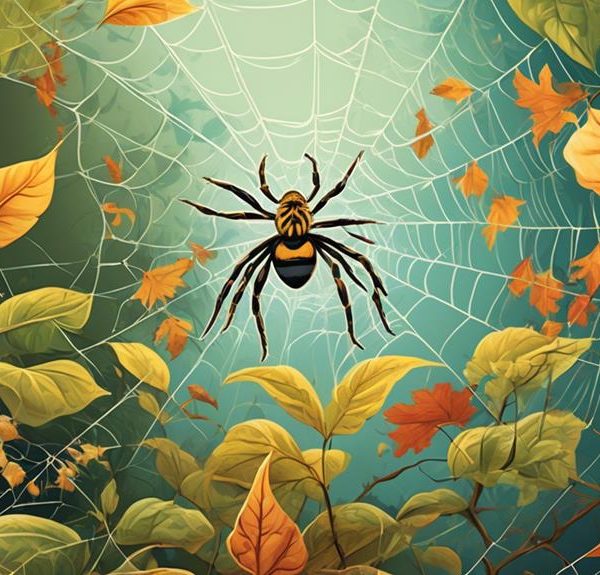Yearning to discover the true purpose behind leafcutter bees' unique leaf-collecting habits? Dive into the fascinating world of these industrious insects with us.
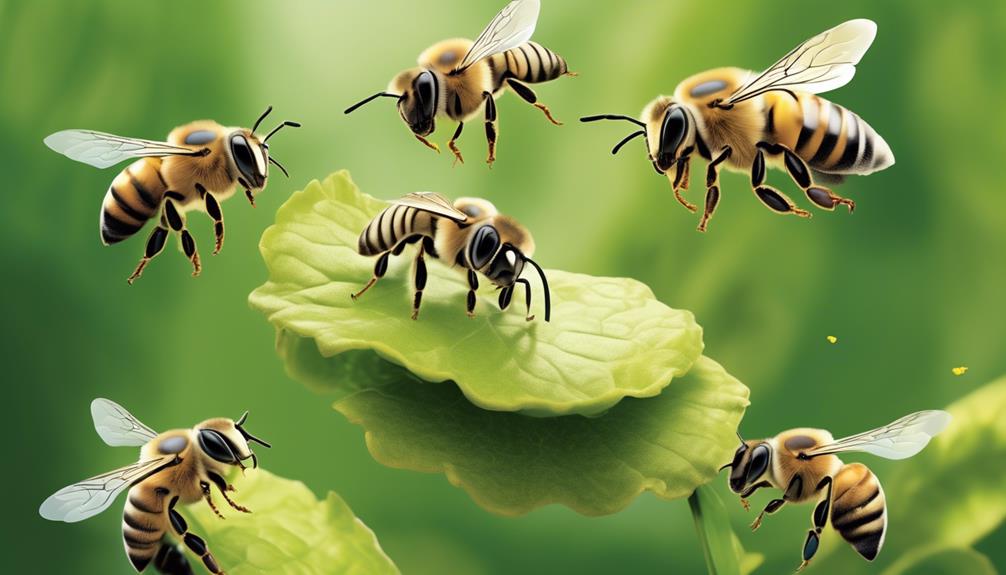
What Do Leafcutter Bees Do With the Leaves
Ever wondered what leafcutter bees really do with those leaf fragments they're always buzzing off with? You might think they're building some sort of bee-sized leaf fortress, but it's actually a bit more fascinating than that.
These industrious insects are known for their unique nesting behavior, meticulously crafting their homes with precision and purpose. But why leaves? And how do they transform these simple green cutouts into an intricate domicile?
Stick around, and let's unravel this intriguing piece of nature's puzzle together.
Key Takeaways
- Leafcutter bees cut leaves or petals to build their nests and provide a protective barrier for their offspring.
- They prefer to inhabit pre-existing cavities such as hollow plant stems or holes in wood.
- Leafcutter bees meticulously fold and layer leaf sections inside the nest to create cylindrical cells provisioned with nectar and pollen.
- Leafcutter bees are efficient pollinators and their leaf-cutting activities stimulate plant growth, making them important for ecosystems and agriculture.
Understanding Leafcutter Bees
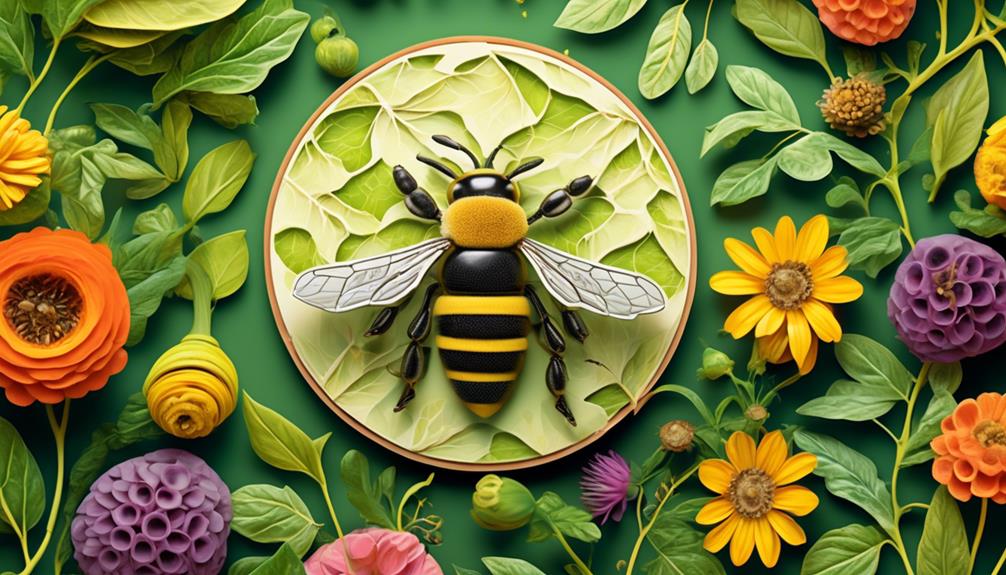
Diving into the world of leafcutter bees, you'll find these insects to be fascinating, displaying unique behaviors and adaptations that set them apart in the vast bee kingdom. You'll see that these solitary bees are named for their practice of cutting leaves or petals to build their nests.
You may wonder, why leaves? It's not random. The leaf fragments serve as a protective barrier for their offspring. It's a carefully planned strategy for survival, exhibiting their instinctual knowledge about their environment.
Their nests, usually built in small crevices or hollow stems, illustrate another adaptation. They're not hive dwellers like honeybees. Each female constructs and provisions her own nest, reflecting an independent lifestyle.
Examining their behavior closely, you'll notice that leafcutter bees are non-aggressive. They'll sting only if they feel threatened, and even then, their sting isn't as painful as that of other bee species.
Lastly, understand that these bees are efficient pollinators. Their hairy bodies catch pollen effectively, aiding in the pollination process. This trait makes them essential for our ecosystem.
In essence, leafcutter bees are impressive creatures. Their unique behaviors and adaptations reflect a complex interplay of instinct, adaptation, and environmental interaction.
Leafcutter Bees: Nest Construction
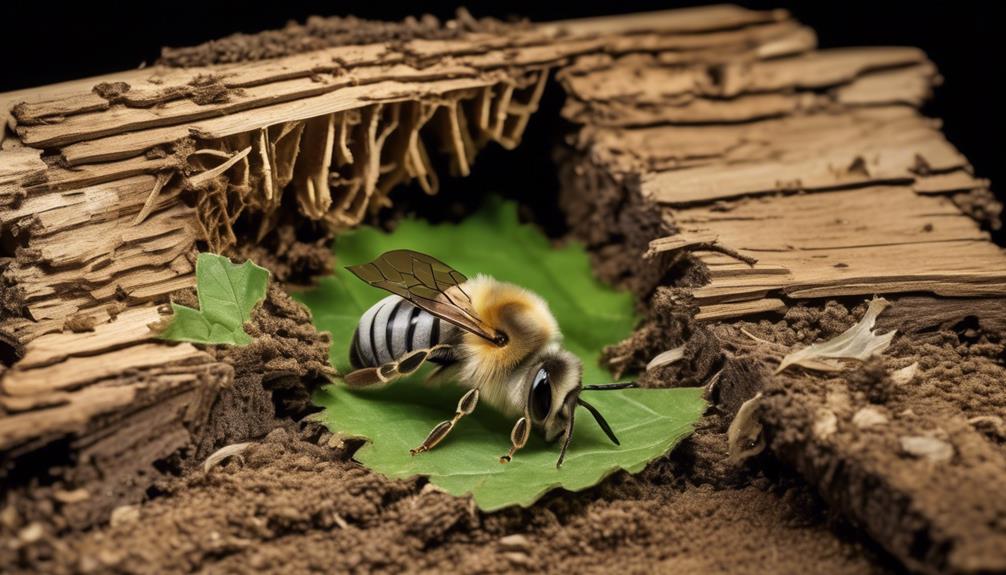
Let's delve into the intricate process of nest construction by leafcutter bees, a meticulous task that showcases their remarkable adaptability and understanding of their environment.
Leafcutter bees prefer to inhabit pre-existing cavities such as hollow plant stems or holes in wood, where they construct a series of cells for their offspring.
Using their sharp jaws, they cut precise, round sections out of leaves, which they then transport back to their chosen nesting site. Once there, they meticulously fold and layer these leaf sections inside the cavity, creating a cylindrical cell. The cell's inner surface is smooth, while the exterior is more roughly layered. This process is repeated until several cells are stacked within the cavity.
Each cell is provisioned with a mixture of nectar and pollen, which serves as sustenance for the developing bee larva. The female bee then lays a single egg in each cell and seals it shut. The leaf sections act as a protective barrier, shielding the eggs and later the larvae from predators and the elements.
Through this complex process, leafcutter bees demonstrate an extraordinary capacity for environmental adaptation and resourcefulness.
The Leaf-Cutting Process
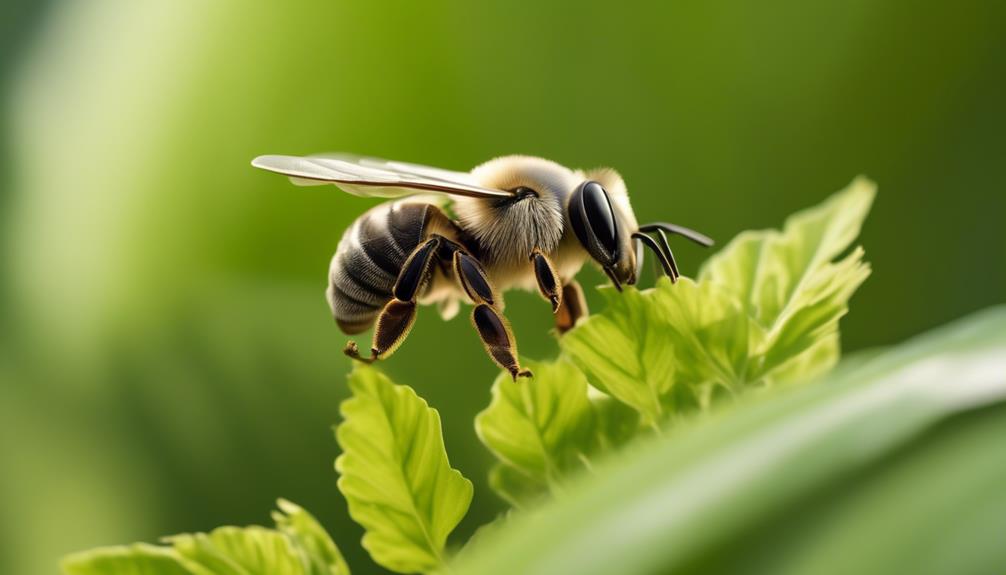
You might find it astonishing how leafcutter bees master the art of leaf-cutting, a process that involves meticulous precision and understanding of their leafy materials. These solitary creatures, unlike their more social honeybee counterparts, wield their jaw-like mandibles to cut and shape leaves for their nests.
First, the leafcutter bee lands on the leaf, assessing its quality and suitability. They're discerning creatures, often opting for thin, pliable leaves over thicker, tougher ones. Once they've made their selection, they get to work, using their mandibles to make precise cuts in the leaf, creating a circular or oval piece that's perfect for their needs.
Next, they roll it up. You'd think it's a delicate task, but they've got it down to a science. The bee uses its legs and body to manipulate the leaf fragment into a cylindrical shape. Then, it's time to fly back to the nest, the leaf bundle clutched securely beneath their body.
Why Leafcutter Bees Matter

Despite their solitary nature, leafcutter bees play a significant role in our ecosystem, contributing to biodiversity and plant pollination, which are crucial for human survival and agricultural productivity.
You see, these small, industrious insects are one of the most efficient pollinators out there. They're known for their unique 'buzz pollination,' where they grab onto a flower and vibrate rapidly. This vibration shakes the pollen loose, enabling it to stick to the bee's fuzzy body, and then gets deposited on the next flower they visit.
Leafcutter bees also help support biodiversity by using a diverse range of plant species to build their nests. This encourages plant growth and dispersal, and leads to healthier, more resilient ecosystems. Furthermore, their leaf-cutting activities stimulate plant growth by pruning the plants, a bit like natural gardeners.
Therefore, the loss of leafcutter bees could have serious repercussions for ecosystems and agriculture alike. Unfortunately, like many pollinators, they're under threat from habitat loss, pesticides, and climate change.
That's why it's so important to protect these diligent workers, and why understanding their behavior not only fascinates us, but is crucial for our survival.
Encouraging Leafcutter Bees in Gardens
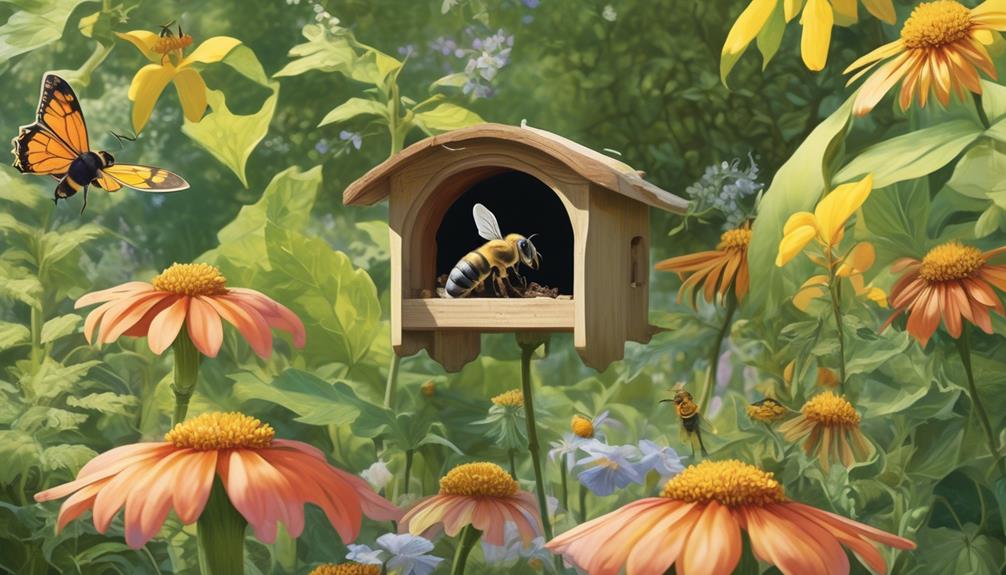
Recognizing the vital role leafcutter bees play in sustaining biodiversity and boosting agricultural productivity, it becomes imperative to explore strategies for fostering their presence in our gardens.
You can encourage these industrious insects by providing them with a suitable habitat. This means planting native, nectar-rich flowers that bloom at different times of the year to ensure continuous food supply. It's also crucial to maintain a pesticide-free environment, as chemicals can harm or deter the bees.
Additionally, leafcutter bees need nesting sites. You can assist them by installing bee houses, which are essentially wooden blocks with holes drilled into them. These simulate the bees' natural nesting sites in rotting wood and plant stems. However, the holes need to be of varying diameters to accommodate different bee species. It's essential to position these houses in a sunny, sheltered location.
Lastly, providing a water source, such as a shallow dish with pebbles, allows bees to hydrate without drowning.
Conclusion
In conclusion, you've learned that leafcutter bees have a unique role in our ecosystem. They skillfully cut leaves, using them to construct safe nests for their offspring. Their leaf-cutting process is a fascinating aspect of the natural world.
They're crucial pollinators, improving our gardens and crops. By encouraging these bees in your garden, you're supporting biodiversity.
So next time you spot those tell-tale semi-circles missing from leaves, remember – it's just a leafcutter bee at work.

